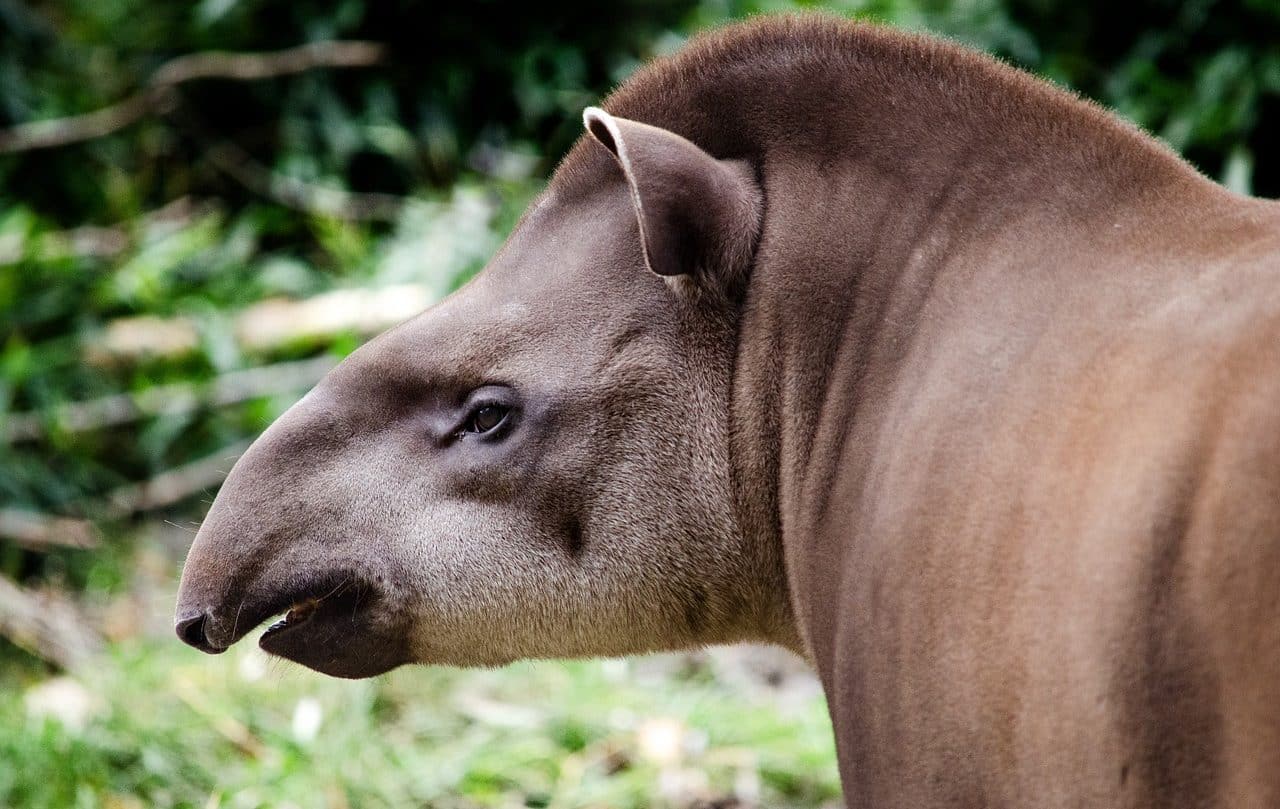
A tapir is a perissodactyl.
A tapir is an animal native to South America and Asia . It is a mammal that is part of the tapyrid family and the order that makes up the perissodactyls (in which we find species that have an odd number of fingers, which end in hooves).
The tapir makes up the only genus (called Tapirus ) of the tapirid family that still lives: the rest of the genera have become extinct. The current relative that is closest to the tapir is the rhinoceros .
Tapir characteristics
The tapir takes refuge in bodies of water and is able to fulfill its physiological needs there, something that the hippopotamus also does. In addition, it has a great ability to swim, and feels a notable attraction for morning baths, which refresh it and free it from parasites and insects, while taking the opportunity to feed on aquatic plants .
Tapirs can measure up to one meter in height, weigh three hundred kilograms and have a length of more than two meters. They are characterized by their elongated snout, similar to a proboscis, which allows them to feed on roots and leaves , and even aquatic plants. It should be noted that the tapir is a herbivorous animal.
Another peculiarity of tapirs is that they have three toes on their hind legs and four toes on their front ones.

Tapirs stay in the water for a long time.
At risk of extinction
Among the tapir's predators , on the other hand, we can name the jaguar and the tiger, as well as the human being .
In various cultures its meat is consumed, which is usually roasted or subjected to a dehydration process to obtain jerky. Tapir leather , for its part, is used to make belts, footwear, whips and straps.
Like many other species, the tapir is in danger of extinction and this is due to the destructive action of humans, both through hunting and the elimination of their natural environments. In some of its habitats, it is estimated that the last century has seen a decrease of close to 50% of its population, which is why it is a truly worrying situation.
Behavior and conduct of the tapir
Regarding its behavior and conduct , the tapir usually stays in the mud and water for a long time. It has diurnal habits although, in a dangerous situation, it is likely to move at night. The tapir is a solitary animal, a characteristic that only changes during the reproductive period.
In general, and especially in its natural habitat , this animal usually remains alone; The same does not happen during the mating season or during breeding, when females move along with their children. In areas where the grass is very rich and abundant, it may happen that three or more tapirs gather to enjoy a good natural banquet, although this is not so common.
The tapir needs to mark its territory, and to do so it uses its urine and olfactory marks that it prints with the help of glands on its face. Its body is resistant and reflects the characteristics of the jungles in which it must live. Throughout his walks, he traces very deep lanes through the undergrowth, something that allows him to retrace the same path with ease.
As not all humans are enemies of the tapir, he does not fear just anyone; In fact, if it does not feel threatened, it may show curiosity about our species , or simply walk past us as if we were not there. When safe, the tapir moves calmly and confidently, sniffing the ground with the help of its characteristic trunk.
